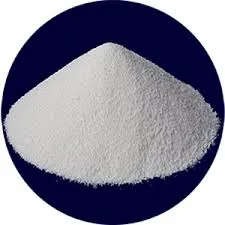- Afrikaans
- Albanian
- Amharic
- Arabic
- Armenian
- Azerbaijani
- Basque
- Belarusian
- Bengali
- Bosnian
- Bulgarian
- Catalan
- Cebuano
- Corsican
- Croatian
- Czech
- Danish
- Dutch
- English
- Esperanto
- Estonian
- Finnish
- French
- Frisian
- Galician
- Georgian
- German
- Greek
- Gujarati
- Haitian Creole
- hausa
- hawaiian
- Hebrew
- Hindi
- Miao
- Hungarian
- Icelandic
- igbo
- Indonesian
- irish
- Italian
- Japanese
- Javanese
- Kannada
- kazakh
- Khmer
- Rwandese
- Korean
- Kurdish
- Kyrgyz
- Lao
- Latin
- Latvian
- Lithuanian
- Luxembourgish
- Macedonian
- Malgashi
- Malay
- Malayalam
- Maltese
- Maori
- Marathi
- Mongolian
- Myanmar
- Nepali
- Norwegian
- Norwegian
- Occitan
- Pashto
- Persian
- Polish
- Portuguese
- Punjabi
- Romanian
- Russian
- Samoan
- Scottish Gaelic
- Serbian
- Sesotho
- Shona
- Sindhi
- Sinhala
- Slovak
- Slovenian
- Somali
- Spanish
- Sundanese
- Swahili
- Swedish
- Tagalog
- Tajik
- Tamil
- Tatar
- Telugu
- Thai
- Turkish
- Turkmen
- Ukrainian
- Urdu
- Uighur
- Uzbek
- Vietnamese
- Welsh
- Bantu
- Yiddish
- Yoruba
- Zulu
Dec . 16, 2024 22:03 Back to list
Albendazole Suspension Dosage Guidelines for Effective Treatment of Parasitic Infections
Understanding Albendazole Suspension Dosage A Comprehensive Guide
Albendazole is an anthelmintic medication used to treat various parasitic worm infestations, including those caused by roundworms, tapeworms, and flukes. It is commonly prescribed in the form of albendazole suspension, which is particularly useful for children or individuals who have difficulty swallowing tablets. Understanding the appropriate dosage of albendazole suspension is essential to ensure effective treatment and minimize the risk of side effects.
What is Albendazole Suspension?
Albendazole suspension is a liquid formulation of the drug, making it easier to administer. The liquid form is especially beneficial for young children or adults who experience swallowing difficulties. Albendazole works by inhibiting the growth and reproduction of parasites, effectively clearing the infection from the body.
Indications for Use
The use of albendazole suspension is indicated for several types of infections, including
1. Ascariasis (infection with Ascaris lumbricoides) 2. Enterobiasis (pinworm infection) 3. Hookworm infections 4. Neurocysticercosis (caused by pork tapeworm larvae) 5. Biliary tract infections (due to the liver fluke)
Before starting treatment, a healthcare professional typically conducts a thorough assessment to determine the specific type of infection and the appropriate dosage.
Dosage Guidelines
The dosage of albendazole suspension varies based on the type of infection being treated, the patient's age, and weight. Generally, the following dosages are recommended
- For children under 2 years The common dosage is 10 mg/kg of body weight. It is crucial to not exceed the maximum dosage advised by a healthcare provider. - For children aged 2 to 12 years A standard dose is 400 mg taken once or as directed by a doctor. - For adults The usual dosage is 400 mg daily. In some cases, treatment may be extended for several days depending on the type and severity of the infection.
albendazol suspension dosis

In certain conditions, such as neurocysticercosis, a healthcare provider may recommend higher doses for a prolonged duration. Always consult a healthcare provider for individualized dosage recommendations.
Administration
Albendazole suspension should be taken with food to enhance absorption. The liquid formulation can be measured using a dosing syringe or cup to ensure accuracy. It's important to shake the bottle well before each use to ensure the medication is evenly mixed.
Side Effects and Precautions
While albendazole is generally well tolerated, some individuals may experience side effects, including
- Nausea - Vomiting - Abdominal pain - Headache - Dizziness
Severe side effects, although rare, may include allergic reactions and liver enzyme elevations. It is essential to seek medical attention if any severe or persistent side effects occur.
Patients with liver disease, pregnant or breastfeeding women, and those taking certain medications should discuss their medical history with a healthcare professional before starting treatment with albendazole.
Conclusion
Albendazole suspension is a critical medication in the treatment of various parasitic infections. Understanding the correct dosage and administration is vital for achieving the desired therapeutic outcomes. Always consult a healthcare provider for personalized advice and monitoring during treatment. By adhering to prescribed dosages, patients can effectively combat parasitic infections and improve their health.
-
Guide to Oxytetracycline Injection
NewsMar.27,2025
-
Guide to Colistin Sulphate
NewsMar.27,2025
-
Gentamicin Sulfate: Uses, Price, And Key Information
NewsMar.27,2025
-
Enrofloxacin Injection: Uses, Price, And Supplier Information
NewsMar.27,2025
-
Dexamethasone Sodium Phosphate Injection: Uses, Price, And Key Information
NewsMar.27,2025
-
Albendazole Tablet: Uses, Dosage, Cost, And Key Information
NewsMar.27,2025













